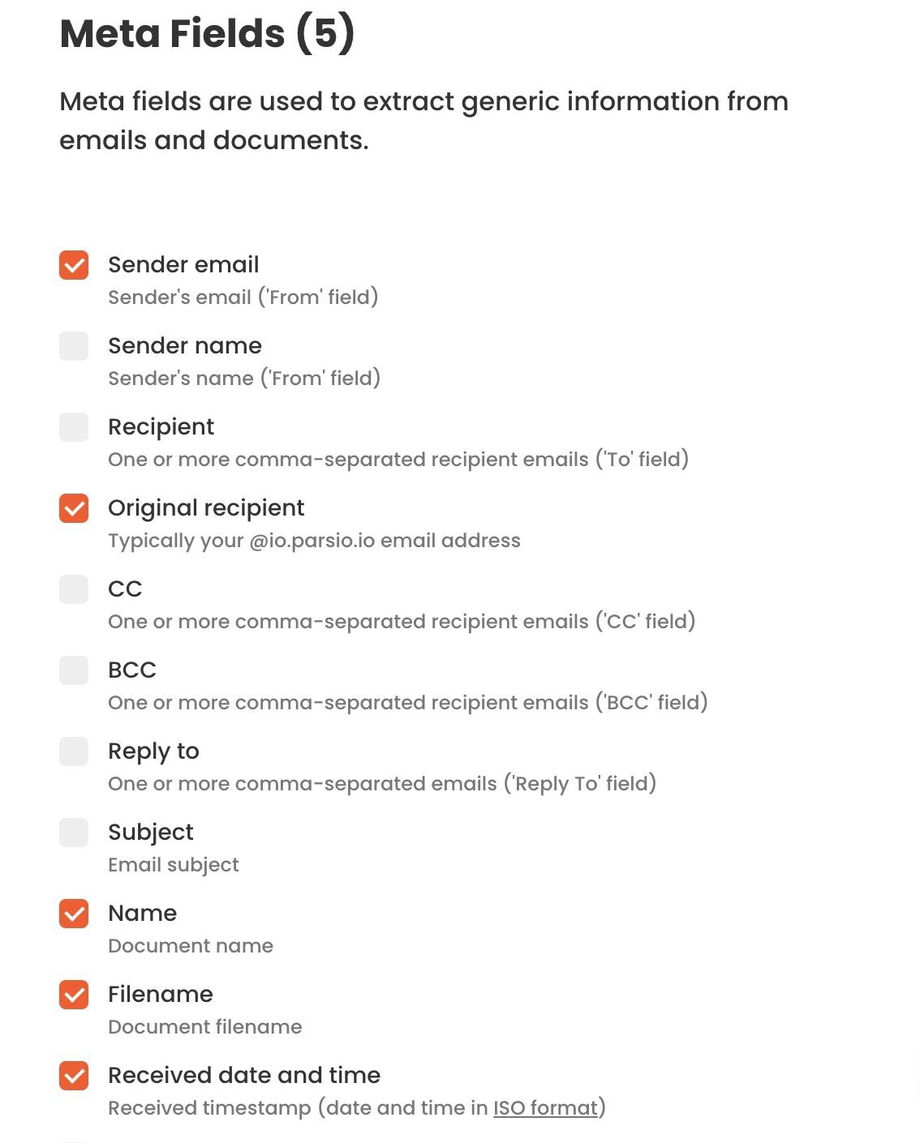📗 Regular vs Meta Fields. Field Selection Rules
Parsio allows you to extract text data from emails and documents. In some cases, you may also want to extract metadata, such as the sender’s email address or the email received date and time.
Regular fields (template-based parser only)
Regular fields are available only in the template-based parser.
They are used to extract data directly from the document content by highlighting text in a template. If you’re new to templates, see: Create your first template.
Below are some advanced details about how regular fields work.
Field creation rules
When adding regular fields, the following restrictions apply:
Chained fields are not allowed. You must leave at least one character between two fields. For example, two fields cannot touch each other directly.


A field cannot include another field. Continuing the previous example, you cannot extract
support@example.comas one field andsupportas another.
Field scope and reuse
Regular fields are created at the mailbox level.
This means that when you add a new field, it becomes available in all templates within the same mailbox.
If a field is not used in a template, it is marked as unused
Unused fields are exported with an empty value

Template priority
When multiple templates exist in the same mailbox, Parsio prioritizes them based on the number of fields:
A template with more fields has a higher priority
If parsing fails with the highest-priority template, Parsio tries the next one
Example:
Template A → 3 fields
Template B → 5 fields
Parsio will try Template B first, then fall back to Template A if needed.
Learn more about regular fields
Meta fields
Meta fields are used to extract generic information about emails or documents, rather than content from the document body.
Examples include:
Sender email address
Received date and time
File name or document metadata
Unlike regular fields, meta fields are created at the mailbox level and apply to all documents in the mailbox, regardless of the parser type.
How to add meta fields
For all mailbox types: Go to the mailbox Fields page.
For template-based parsers only: You can also add meta fields from the Meta tab in the Template editor.


